Note
What is your opinion on the article "Mesopotamian or Iranian? A New Investigation on the Origin of the Goddess Anāhitā" by Alireza Qaderi?
He proposes that Anahita is possibly the syncretism of an Iranian Water goddess with Annunitum, and while it largely makes a lot of sense to me, especially with how it points out that we can't treat the Avesta as we know it as identical to the Avesta in Zarathustra's time,
it also assumes the Central Asian goddess Ardokhsho comes from Aredvi Sura instead of Arti, and everything else I've seen just says Ardokhsho comes from Arti, although I haven't seen much literature on either deity tbh
Sorry it took me a few days to answer this ask even though it’s basically laser focused on my interests. I had some other stuff to read and unpleasant work duties to perform and couldn’t properly go through the recommended paper.
My feelings about the paper are mixed. I think anyone who remembers Annunitum was a distinct deity as early as in the late third millennium BCE deserves at least some credit. The notion of interchangeability of goddesses still haunts the field, fueled by Bible scholars, Helsinki hyperdiffusionists and the like. Overall the author shines in the sections dedicated only to the evaluation of the broadly Iranian material, but as soon as the focus switches to Mesopotamia things fall apart, sadly.
More under the cut. Hope you don’t mind that I’ll also use this as an opportunity to talk about Annunitum in Sippar in general. I've been gathering sources to improve her wiki article further (don’t expect that any time soon though).
The Iranian material
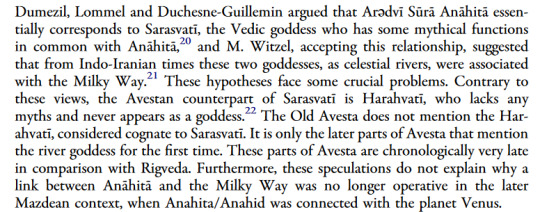
Criticizing the vintage attempts at equating Anahita with Sarasvati is sound and sensible. Same with stressing that she is distinct from Nanaya and Oxus. The criticism of theories depending on lack of familiarity with the historical range of the beaver was a nice touch too, it demonstrates well that the author wanted to cover as much previous literature as possible. However, I also have no clue what’s up with “ΑΡΔΟΧΡΟ has an ambiguous relationship with Arədvī Sūrā”, I’ve also only ever seen this name explained as a derivative of Ashi/Arti save for a single paper trying to force a link to Oxus which was met with critical responses. It’s entirely possible this is an argument I simply haven’t seen though, I’m also not really familiar with this matter.
Overall the arguments against seeking Anahita’s origin in the east are perfectly sensible, and line up with the evidence well - no issues at all with this part of the paper. Following a more detailed list of Anahita’s easter attestations from Shenkar’s Intangible spirits and graven images. She appears on some Kushano-Sasanian coins, but this seems to reflect importing her from the west relatively late on since she appears in neither Kushan nor Bactrian sources. The coins are even exclusively inscribed in Middle Persian, with no trace of the local vernacular.
For unclear reasons Anahita caught on to a degree even further east in Sogdia, but attestations are limited to the period between fourth and sixth centuries. Since they’re largely just generic theophoric names, it is hard to call her anything but a minor deity of indeterminate character in this context, though. I’ve seen the argument that the popularity of Oxus in the east might have been the obstacle to introducing her. Oxus was a bigger deal in Bactria than in Sogdia so it could even explain why Sogdians were slightly more keen on her, arguably, even if they and Bactrians came into contact with her cult under similar circumstances.

Back to the article, the section dealing with the western attestations starts on a pretty strong note too. The need for reevaluation if it’s fair to talk about Achaemenid rulers as “Zoroastrian” is a mainstay of studies published over the past 10-15 years or so. I can’t weigh on the linguistic arguments because I know next to nothing about that.

I’m not sure if I follow the argument that it makes no sense Iranian population wouldn’t need a royal order to start worshipping a new deity as long as they were Iranian, tbh - linguistic or cultural affiliation doesn’t come prepackaged with automatically updated list of deities one is obliged to instantly adopt as soon as they pop up into existence. Following this logic, why didn’t Sargon’s Akkadian speaking subjects in Syria just adopt Ilaba before being obliged to do so? You will find literally hundreds of cases like this, it’s a very weird argument to me.
The Mesopotamian material
The biggest problems start once the coverage of Mesopotamia begins. The rigor evident in the strictly Iranian sections of the article just… vanishes and it’s incredibly weird.
Herodotus as a source is… quite something. The phrase “ a goddess with a Semitic character” is… well, quite something too (Reallexikon generally advises against defining anything but languages as “Semitic” in Mesopotamian context - Mesopotamian is a perfectly fine label to use, and accounts for the fact that Sumerian, Hurrian and Kassite are not a part of the Semitic language family). It keeps repeating later and admittedly I’m not very fond of this. Especially when it pertains to the west of Iran, where deities originating in Mesopotamia were worshiped since the late third millennium BCE - they were more Elamite than Mesopotamian by the time Persians showed up, really. The matter is covered in detail in Wouter Henkelman’s Other Gods who Are with Adad in the Persepolis Fortification Archive as a case study.

Cybele was by no means Mesopotamian (with each new study she keeps becoming more strictly Phrygian, with earlier Anatolian, let alone Mesopotamian, influence becoming less and less likely) so I'm not sure what she's doing here, Nanaya’s associations with lions is almost definitely an Iranian innovation and not attested before the late first millennium BCE; despite earlier sound arguments against ascribing strictly Avestan Zoroastrian sensibilities to people in the late first millennium BCE, that’s basically what happens here. Lions were evidently viewed favorably by at least some Persians and especially Bactrians and Sogdians.
The less said about the part trying to link evidence from Palmyra to Inanna and Dumuzi (what does a marginal spouse deity like Dumuzi, entirely absent from Palmyra, have to do with Sabazius, a veritable pantheon head equated with Zeus?), the better. Frazerian bit, if I have to be honest.
I’m not sure about the enthusiasm for Boyce’s argument that it makes little sense for Anahita to simultaneously be a river goddess and to bestow victory in battle. The latter characteristic lines up well with her elevation to the position of a deity tied to investiture of kings, which in turn is something which boils down to personal preference of a given dynasty. The character of deities isn’t necessarily supposed to be one-dimensional and having distinct spheres of activity because of historical factors is hardly unusual.
Stressing that it’s not possible to treat Anahita and Ishtar as interchangeable is commendable. However, I don’t think it’s possible to claim continuity between the religious beliefs reflected in the relief of Anubanini and first millennium BCE Media. The argument is not pursued further, to be fair, but it’s still weird.
The next huge issue is the treatment of the late “Anu theology”. A good recent overview of this matter can be found in Krul’s 2018 monograph (shared by the author herself here).
For starters, it’s completely baffling to declare Anu had no spouse at first; Urash and Ki are both attested in the Early Dynastic period already - and the former appears reasonably commonly in this role in literary texts and god lists. Even Antu might already be present in the Abu Salabikh list.
Attributing Inanna prominence in Uruk and in the Eanna in particular to identification with Antu is utterly nightmarish and one of the worst Inanna takes I’ve ever seen; the fact it’s contradicted by information of the same page makes it pretty funny, admittedly. Inanna’s ties to the city go back literally to the beginning of recorded history (some of the oldest texts in the world are demands aimed at cities under the control of Uruk to provide offerings for Inanna ffs), and probably even further back. Meanwhile, Anu for most of his history was an abstract hardly worshiped deity; Krul stresses this in the beginning of her book linked above. I’m not a fan of ancient matriarchy takes which are often lurking in the background when the cases of earliest city goddesses like Inanna, Nisaba and Nanshe are discussed but I do think the need to downplay Inanna’s prominence and elevate Anu which pops up every few years in scholarship is suspect and probably motivated by sexism, consciously or not, tbh.
Trying to make the “Anu theology” which developed in the late first millennium BCE an influence on the entirety of Mesopotamia and beyond is puzzling. Sabazius appearing in Palmyra with a spouse is tied to Anu, somehow? The fact that deities had spouses is? Atargatis ties into this somehow? I’m sorry, but I’m not following. Also, Uruk was no longer a theological center of the Mesopotamian world in the first millennium BCE. Babylon was, and before that Nippur. There is no need to speculate, there are thousands of texts to back it up. The late sources from Uruk in particular show that Babylon was somewhat forcefully influencing the city, not the other way around.
The Anu theology was a display of local “nationalism” of Uruk and had a very limited impact. There is evidence for some degree of late theological cooperation between Uruk and Nippur, and possibly Der as well (Der itself despite being located with certainty has yet to be excavated, though, so caution is necessary), but nothing of this sort is to be found in the late sources from other locations.
Annunitum = Anahita?
Finally, let’s look at the core idea behind the article.

Right off the bat I feel it’s necessary to stress Annunitum generally wasn’t regarded as an astral deity. In the Old Babylonian period, the Venus role was evidently handled by Ninsianna in Sippar; later on they aren’t even attested there but the regular Ishtar is. Seems doubtful it would actually be Annunitum who got to be an astral deity there at any point in time.

This claim is also highly dubious. There is no evidence that Antu was ever worshiped in Sippar, let alone that she was equated there with Annunitum; she doesn’t show up at all in Jennie Myers’ 2002 thesis The Sippar pantheon: a diachronic study. Paul-Alain Beaulieu stresses her lack of importance all across Mesopotamia save for first millennium BCE Uruk here. There is also no evidence that the late Anu theology impacted Sippar in any capacity. Shamash retained his position in the city until the death of cuneiform. Even in Uruk, Annunitum in the late sources appears only in association with Ishtar and Nanaya, not Anu and Antu. I will repeat how I feel about the need to assert Anu’s importance where there is no trace of it.
Overall it feels like unrelated Mesopotamian and adjacent sources from different areas and time periods are used indiscriminately; which is ironically the criticism employed in the article wrt the treatment of Iranian textual sources by other researchers.
The Assyriological sources employed leave a bit to be desired, too. In particular Abusch’s Ishtar entry in the Dictionary of Deities and Demons in the Bible is a nightmare (he’s good when he covers incantations but his broader “theological” proposals are… quite something), here are some quotes from it to show how awful it is is a central point of reference:




Of the other authors cited, Jacobsen is Jacobsen and a lot changed since the 1960s. Roberts was criticized right after his study was published by researchers like Aage Westenholz. Langdon’s study from the early 1900s is an outdated nightmare, I guess we know what’s up with the Dumuzi hot takes now. Beaulieu is great but his papers and monographs aren’t really utilized to any meaningful extent, I feel.
Other criticisms aside, I’m unsure if Annunitum was important enough in the fifth century BCE to be noticed by Artaxerxes II as postulated here, especially since Shamash was right next door and definitely retained some degree of prominence. Most if not all cases of Mesopotamian deities influencing Persian or broader Iranian tradition reflect widespread cults of popular deities - Nanaya, Nabu (via influence on Tishtrya), Nergal (in the west, around Harran) - as opposed to a b-list strictly local deity. And it’s really hard to refer to Annunitum differently. Let’s take a quick look at her position in the twin cities of Sippar - as far as I am aware, the most recent treatment of this matter is still Myers’ thesis, and that’s what I will rely on here.
Annunitum is first attested in Sippar in the Old Babylonian period, during the reign of Sabium, though as a deity already locally major enough to appear in an oath formula alongside Shamash. In the Early Dynastic period Sippar-Amnanum was likely associated with an enigmatic figure designated by the logogram ÉREN+X who doesn’t seem to be related to her. When and how exactly the tutelary deity change occurred is not presently possible to determine and admittedly of no real relevance here.
Evidently Annunitum’s cult in Sippar was influenced to some degree by the Sargonic tradition she originated in, her temple was even called Eulmaš just like that in Akkad. It’s not impossible it was even originally founded by one of the members of the Sargonic dynasty, but in absence of pre-OB evidence caution is necessary. There is no shortage of later rulers who wanted to partake in the Sargonic legacy, after all. By the earliest documented times, it was the second most important temple in the Sippar agglomeration, and the only one beside the Ebabbar to have its own administrative structure.
Annunitum was even referred to as the “queen of Sippar” (Šarrat Sippar; note that by the Neo-Babylonian period this title came to function as a distinct goddess, though). In Sippar-Amnanum there was a street, a gate and a canal named after her. A bit over 6% of the inhabitants of both cities bore theophoric names invoking her, also.
Sippar-Amnanum was abandoned for some 200 years after the reign of Ammi-saduqa, but it seems the clergy simply moved to the other Sippar next door. Next few centuries are very sparsely documented at this site, but supposedly Shagarakti-Shuriash rebuilt Annunitum’s temple (the matter is discussed in detail here).
Inscriptions of Tiglath-pileser I dealing with the conquest of northern Babylonia affirm that Annunitum continued to be viewed as the goddess of Sippar through the Neo-Assyrian period. According to an inscription of Nabonidus her temple, and Sippar-Amnanum as a whole, were razed by Sennacherib (he also blames “Gutians” for it though by then this is a label as generic as “barbarian”). This might be why her cult had to be relocated to the other part of Sippar again. In the Neo-Babylonian period it returned to Sippar-Amnanum under Neriglissar, though her temple was only rebuilt by Nabonidus. It survived at least until the reign of Darius, though it was only a small sanctuary (É.KUR.RA.MEŠ) like those of Adad and Gula.
There is very little evidence for popular worship of her so late on: only two theophoric names have been identified…. For comparison, Shamash appears in 208 (out of 823 theophoric names, out of a total of 1243 total). Nergal, Gula, Adad and even Amurru are all more common. Aya is also absent, but unlike Annunitum despite her prominence in earlier periods she was actually never common in theophoric names, save for the names of naditu; and naditu ceased to be a thing after the OB period.
Offering lists complicate the matter further. From the reign of Nebuchadnezzar, Annunitum started to lose ground to a duo introduced from Dur-Kurigalzu: a manifestation of Nanaya associated with this city and Ishtar-tashme. Why they suddenly appeared in Sippar and why they overshadowed Annunitum is uncertain, perhaps Dur-Kurigalzu just failed to recover from decline after the end of the Kassite period and eventually the decision was made to start transferring local deities to other nearby major urban centers. The process reversed during the reign of Nabonidus, who ordered an increase in offerings made to her. This might’ve been motivated by his general concern for Sin and any deities considered members of his immediate family - essentially, a display of personal devotion. This elevation is still evident in offering lists from the reign of Cyrus, though.
Overall the paper is quite convincing - outstanding, even - when it comes to the Iranian material alone, and between mediocre and nightmarish once the author shifts to Mesopotamia.
16 notes
·
View notes
Text

”bisexual tennis movie? i never signed away the rights to my life?”
8 notes
·
View notes
Text

7 DAYS UNTIL THE FIRST CHAPTER DROPS
46 notes
·
View notes
Text
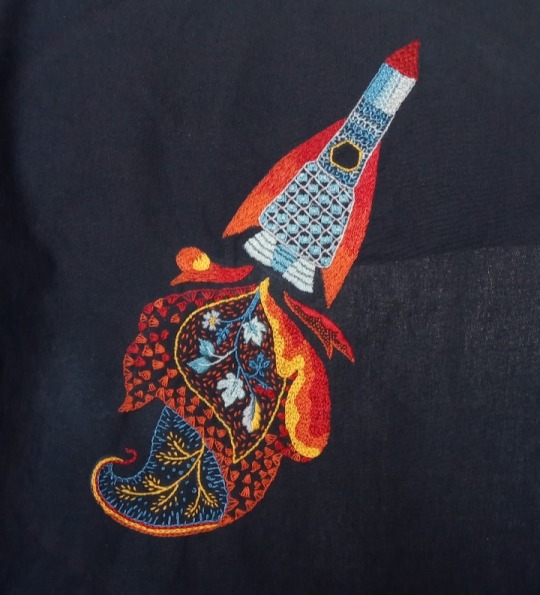
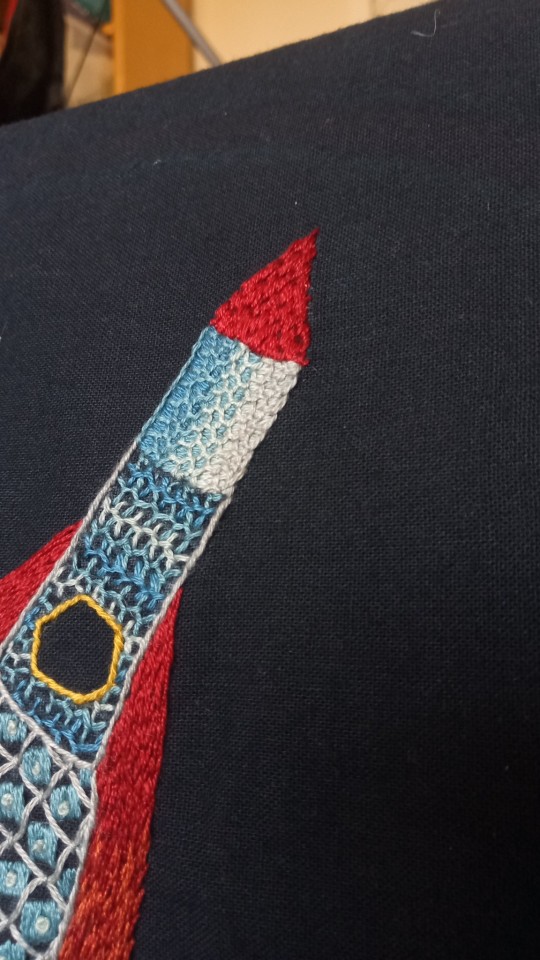
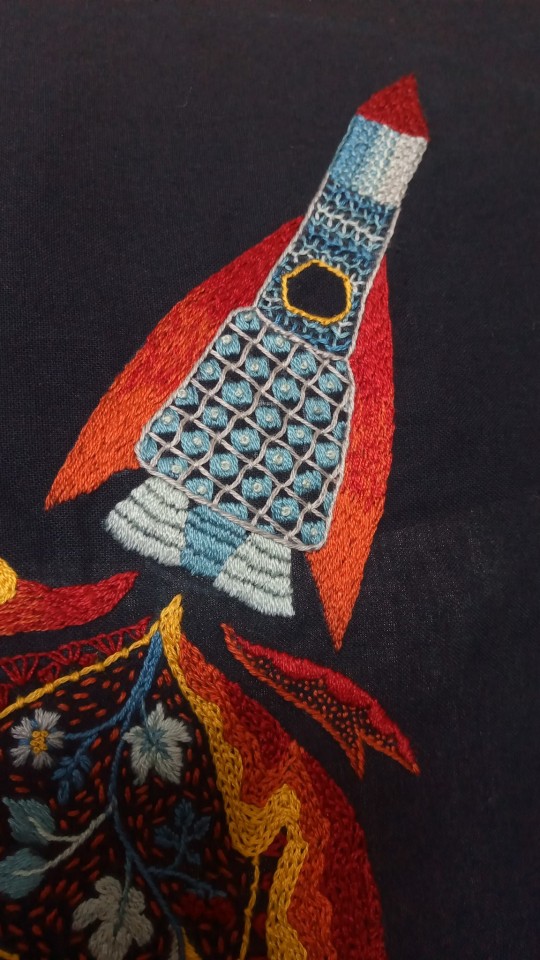
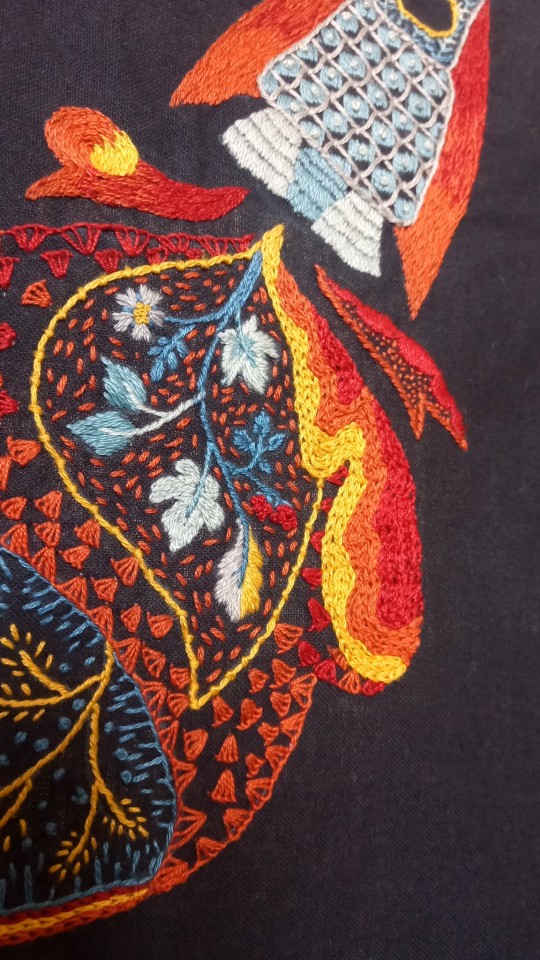

OK I've taken pictures before ironing bc who knows when I'll get round to ironing. Some months ago I fell down a weekend research hole with some antique needlework books and read a Bunch about jacobean embroidery.
And then I drew a rocket. All the stitches are found in actual 16th century embroideries. The flame and tree of life are my own interpretation of designs that were a common motif.
I tried so many different things in this piece, and I can't decide what my favourite part is.
122 notes
·
View notes
Text

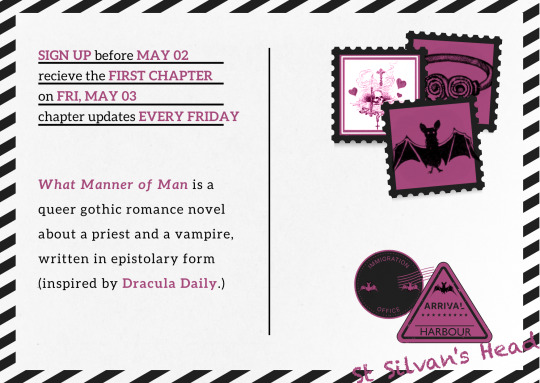
WHAT MANNER OF MAN has risen from the grave! 🦇
❧ Get weekly letters from Catholic priest and beautiful idiot Father Ardelian as he slowly succumbs to the vampire’s wicked allure.
❧ (And maybe comes to term with some things about himself along the way.)
❧ A tale of blasphemy, scandal, and sin!
❧ (Also presenting: swashbuckling lesbians with swords!)
SIGN UP HERE (for free!)


542 notes
·
View notes
Text

Happy April 25th Everyone. Remember your light jacket.
816 notes
·
View notes
Text
Swords rated by sexiness:
Broadsword <- Not for me but I guess if you're into bears
Rapier <- This one’s sexy but like a little too sexy. I wouldn't approach a rapier at a bar
Longsword <- Handsome but boring. Almost too boring to mention
Flamberge <- Huge show-off, kinda want to knock the flamberge down a peg, but in a sexy way
That’s all the swords I know thanks for coming
263 notes
·
View notes
Text

upending my basket full of ardelians
31 notes
·
View notes
Text
Me: I don't write for validation.
Also me when my story on AO3 gets a kudos:

5K notes
·
View notes
Text
An excerpt from my latest substack post about Jesus and the Aztec god Tezcatlipoca.
"One of the many attitudes that distorts the ‘common knowledge’ view of mythologies is attempting to seek out a single Jesus like personage and a single Devil like character. This leads to many mythical figures being aggressively type casted as villains and striped of all nuance in fiction, tainting their modern day reputation, like the Aztec god Tezcatlipoca.
In the case of Tezcatlipoca this is especially ironic, as despite popular culture designating Quetzalcoatl as the ‘Aztec Jesus’ figure while demonizing Tezcatlipoca, it is Tezcatlipoca who developed an intimate relationship with Jesus and other Christian figures after the conquest."
7 notes
·
View notes
Text

Together we can fix this. Pucker up.
It’s almost like you’ve never felt the kiss of the priest’s knife as he lays you on the altar. No wonder you’re posting on Tumblr.
26 notes
·
View notes
Note
Who among the Case Files of Sheridan Bell cast would be the worst at parking a car?
Oh, it is *definitely* Saoirse. And it's not that she's incapable, it's that she literally just can't be bothered.
thank you for the ask!!
#you're welcome#I'm now imaging Saoirse taking up two parking spots at once with her bad parking and shrugging at suggestions she be considerate#Then she realizes one of the people she's made trouble for is Taise#reblogs
5 notes
·
View notes
Text
You guys rlly don't realise how much knowledge is still not committed to the internet. I find books all the time with stuff that is impossible to find through a search engine- most people do not put their magnum opus research online for free and the more niche a skill is the less likely you are to have people who will leak those books online. (Nevermind all the books written prior to the internet that have knowledge that is not considered "relevant" enough to digitise).
Whenever people say that we r growing up with all the world's knowledge at our fingertips...it's not necessarily true. Is the amount of knowledge online potentially infinite? Yes. Is it all knowledge? No. You will be surprised at the niche things you can discover at a local archive or library.
#this is why reading academic sources is important for mythology research#I might be the first person to have posted online about the known Tezcatlipoca and Jesus associations I read about in decade old books#or not but at the very least just going off online sources would not pull up that or Tezcatlipoca's Ursa Major connection and others#reblogs
75K notes
·
View notes
Text
An excerpt from my latest substack post about Jesus and the Aztec god Tezcatlipoca.
"One of the many attitudes that distorts the ‘common knowledge’ view of mythologies is attempting to seek out a single Jesus like personage and a single Devil like character. This leads to many mythical figures being aggressively type casted as villains and striped of all nuance in fiction, tainting their modern day reputation, like the Aztec god Tezcatlipoca.
In the case of Tezcatlipoca this is especially ironic, as despite popular culture designating Quetzalcoatl as the ‘Aztec Jesus’ figure while demonizing Tezcatlipoca, it is Tezcatlipoca who developed an intimate relationship with Jesus and other Christian figures after the conquest."
7 notes
·
View notes
Text

What Manner of Man is coming back!
The entire novel will be re-serialized from beginning to end, details as follows:
The Preface will go out Thursday, May 02, 2024
Chapter One will go out Friday, May 03, 2024
Chapter updates will be emailed weekly from then until Friday, January 03, 2025.
Each week, I will also be posting chapters of the re-edited final edition of What Manner of Man, with all of its additional material, for Patrons!
64 notes
·
View notes

